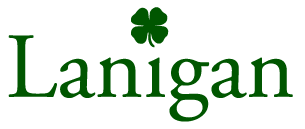Under a Chapter 13 plan, the debtor makes payments based on the type of claim by the creditor. Each creditor’s claim is classified into three types of categories: secured, priority, and unsecured. As such, it is important to understand the different rules for claims based on their classifications. Here is a basic outline for the treatment of creditors in a Chapter 13 case.
Secured Claims: The debtor has three alternatives for treatment of secured claims. First, the debtor is allowed to treat secured creditors consensually and provide them equal treatment. This means each secured creditor is treated the same and can only receive different payments if he agrees to a lesser amount. Second, the debtor is allowed to pay the claim and preserve the lien while payment is pending. This means the creditor becomes entitled to foreclose on the full balance only if the debtor defaults before completion of the Chapter 13 plan. Third, the debtor is allowed to surrender the collateral to the holder of the claim. This means that the secured claim is disposed and the debtor’s obligation to pay is terminated. Each alternative is an option decided by the debtor under a Chapter 13 plan.
Priority Claims: All priority claims are required to be paid in full by deferred cash payments unless the holder agrees to different treatment. Thus, the order of priority is not as directly relevant in a Chapter 13 case as it is in chapter 7.
Unsecured Claims: The debtor is allowed to divide unsecured claims into classes. However, the required amount to be paid on each unsecured claim must be no lower than what would have been paid on the claim had the estate been liquidated. Known as the “best interests” test, this requires the debtor to determine the present value through a hypothetical chapter 7 distribution. However, the formula for calculating present value differs between secured and unsecured claims. The present value of a secured claim is determined by adding interest to the allowed amount of the claim (its face value); the present value of an unsecured claim is confined to the chapter 7 distribution plus interest. This is because secured claims are paid in full out of collateral in a chapter 7 case, while unsecured claims receive only a partial distribution unless the estate is solvent.
The payment plan in a Chapter 13 case involves specific rules for the treatment of creditors. Therefore, it is very important to understand these rules before you start making payments to creditors. If you have any questions regarding the treatment of creditors in a Chapter 13 case or anything bankruptcy related, talk to Roddy Lanigan in Winter Springs, Florida. At Lanigan and Lanigan, we want to make sure your payment plan works for you and that you understand where your money is going.

